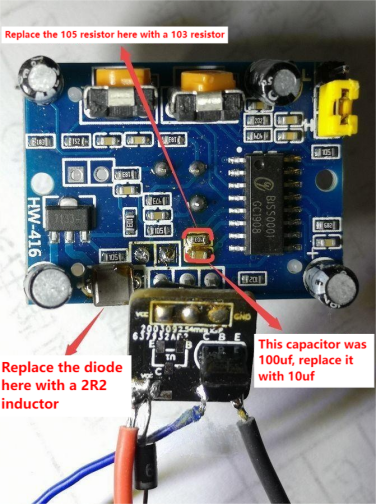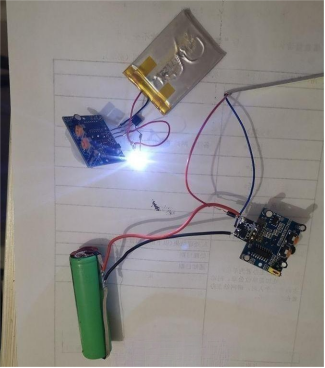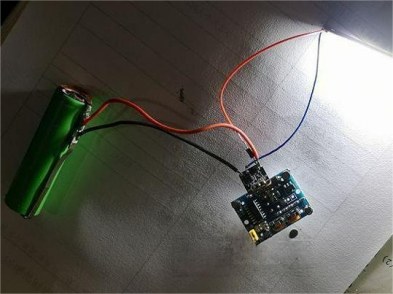
Embarking on the creation of do-it-yourself solar-powered motion sensor lights, the previous article covered the SR501 Sensor: DIY Projects & Applications. While the initial method may involve a degree of complexity with numerous modifications, we present a streamlined alternative.
Please refer to the illustrative diagram below:

In this iteration, the diode at the upper section is substituted with a 2.2UH inductor. This adjustment is particularly relevant for application in a 3.7V lithium battery-powered context. It not only enables the module to function at lower voltages but also serves a filtering function. Following this modification, the module's operational threshold is lowered to 3V, significantly enhancing sensitivity, allowing for seamless detection at distances ranging from 5 to 6 meters, even under outdoor conditions with a temperature of 21 degrees Celsius. Furthermore, the dwell time, previously spanning 3 to 5 seconds, has been compressed to approximately one second for secondary triggering.


Moving forward, the next phase entails the development of solar lights featuring light control, timed illumination spanning 4 to 6 hours, followed by motion sensing for an additional 4 to 6 hours, ideally with a dim light functionality.
Many conventional solar lights lack essential lithium battery protection, resulting in premature battery failure within months due to incongruent pairing of solar panels and lithium batteries. Although separate solar panels with higher power output are available, they often lack the crucial lithium battery safeguard. In these instances, the battery is integrated with the light and control board, rendering repairs challenging. Attempts at forceful disassembly may lead to glass cover breakage, compounded by a 0V battery voltage, making reactivation unfeasible.
In the realm of energy efficiency, motion-sensor-driven solar lights stand out. Equipped with a 3000mAh lithium battery and a 6V 4W~5W solar panel designed for bicycles, they endure prolonged periods of continuous rainfall for up to half a month. However, the downside lies in their dependence on motion detection, leaving the environment in complete darkness when no activity is observed. Conversely, lights designed for prolonged nighttime operation may cease functioning during rainy nights, underscoring the resilience of those equipped with a timing function. A setup featuring a 10000mAh lithium battery, two parallel-connected 6V bike solar panels, a 4056 charging chip, and a 450mAh LED working current results in limited nighttime usage during protracted rainy spells. On cloudy days characterized by intermittent sunlight, the light perseveres throughout the night until dawn when it automatically extinguishes.
The pinnacle of efficiency involves configuring the system to emit a subtle glow in the absence of human presence (sufficient for clear road visibility) and transitioning to high brightness upon detecting human activity. To achieve this, a timed chip such as the EC340EGB minute timing IC chip (SOP-8 package, programmable timing IC) is recommended, with detailed specifications available online.




